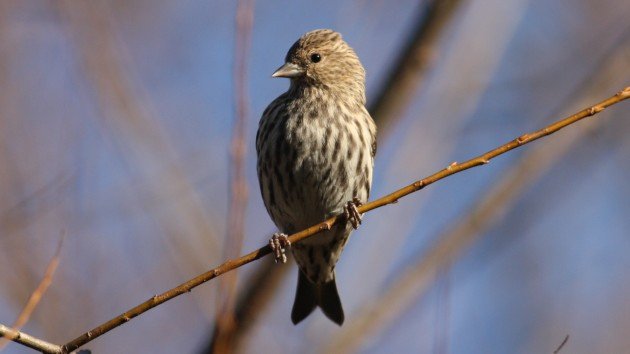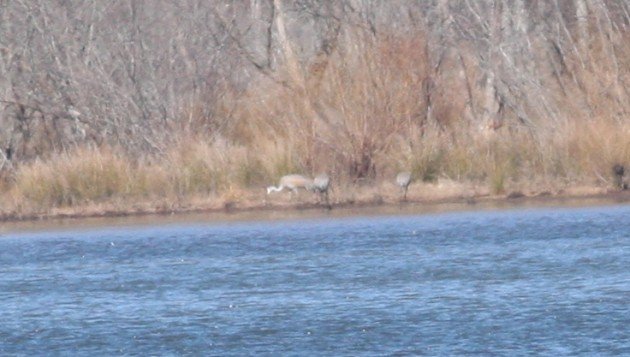
I think some of the antagonism towards listing in birders comes from the mistaken belief that one’s list is nothing more the basest commodification of birds, living beings with incredible life histories reduced to a number. I tend to see things the other way around. My various lists – life, ABA, county, yard – are collections of memories, each one precious. And given my own regular absent-mindedness, without the constant assistance of eBird they’re memories that would sadly be lost to time. For some birders, yes, that excel spreadsheet may mean nothing but for the number attached to it, but to me, it’s a symbol of a life well-lived, a life among birds and among birders.
One’s list can also provide insight into places you’ve been, people you’ve been with, and as such as prone to various idiosyncrasies. For instance, #400 for is Peregrine Falcon, which I first spotted in the Florida Keys. My wife and I were heading to Key West for a friend’s wedding one fall, and we’d pulled the rental car into a gas station. While filling the tank I spotted a number of circling raptors and, grabbing my binoculars, found a trio of Peregrines circling with Sharp-shinned Hawks, Turkey Vultures, and Magnificent Frigatebirds (it was the Florida Keys, after all). For many birders it may be hard to believe that I could have seen 399 species of birds in North America and none of them had been a Peregrine Falcon, but it’s just one of the strange ways birding plays out. For the most part, the birds come to you when they come to you.
Which brings to my most recent home county bird: Pine Siskin. This year Pine Siskins have been present in not overwhelming numbers across the Piedmont of North Carolina. It’s a bird that irrupts into the area every 2-3 winters, and this year has been a siskin winter. Except that I hadn’t found one. I set up my scope looking out a back window of my house and regular comb the tops of the Tulip Poplars and Sweetgums that grow back there to no avail. My eBird hourly alert email pings me with regularity, as other birders come across the nomadic flocks. It was probably the easiest bird I had to find this winter for the county, and still, the siskins were avoiding me.
 Pine Siskin, but one seen elsewhere.
Pine Siskin, but one seen elsewhere.
All this perhaps isn’t that unusual, and I’m certain that the only thing more boring to read about than birds you have seen in your county are birds you haven’t seen. But my siskin quest and failure was rapidly reaching the point of absurdity. There is no reason why I couldn’t come across one, particularly when my most recent county bird was a trio of distant Sandhill Cranes last week. This, a bird that has only been recorded in the county a few times before.
And that’s hardly all. Guilford County has hosted the state’s first inland record of Pacific Loon, and a pair of Western Grebes that were the first chaseable individuals in the state. All this before a Pine Siskin, perhaps one of the easiest birds to find in the area this winter. But that’s the way the list builds, in unpredictable ways, and even that’s a memory worth holding on to.
Now, to work on those Savannah Sparrows I still need…












If listing cases antagonism, what about this new generation that photograph. At least in my experience, listers have empathy for birds, I cannot say the same for photographers who are generally just after the ideal shot…a trophy.
Very recognisable! My list consists of entries scribbled in guidebooks and a summary in Excel. the guidebooks give me the stories, where, whom I was with, even the weather. Seen about 600 birds in Southern Africa and still missing the Cape Rockjumper so I empathize with your “missing birds”
“A life well lived” indeed. Very well said!
I think county lists are especially subject to quirks because they cover a limited area that may not have ideal habitat for some very common birds.
It took my dad almost 40 years to get a Great Horned Owl for Maine, and this is with living in the woods. This despite having both a Barred and a Saw-whet Owl in the yard.I find it humerous of the “easy” birds that we find missing from our lists.
I have no antagonism toward listing. It’s just not for me. I’d rather watch a Wilson’s warbler for an hour and take notes than scurry around trying to make a list of 12 birds.
I gave up birding with birders because I got tired of careening around the countryside in cars from spot to spot in a mad dash to see as many birds as possible in a single day, often being cajoled into leaving a scene that was fascinating because we weren’t seeing any new birds. The tipping point happened on a road in the Canadian Rockies where I stopped with a fellow birder at a mineral lick, about 30 feet off the road, that had both bighorn sheep and mountain goats all over it. Two young rams were doing something that I’d never seen live before — backing up, charging each other, and butting heads so hard that it echoed across the canyon. The birder I was with wanted to leave after about two minutes because there weren’t any willows there, and he wanted to get a…..I forget. Maybe he remembers, because it’s on his list.
“Missing birds” are always intriguing! A “life among birds” is where we are at! Enjoy what you see each day and be intrigued by what you don’t see! Birds have wings and no doubt there was a reason you did not see certain species.
I keep one list -county. I have two species left that are considered regular: pine Siskin is one. I’ve hiked nearly a hundred miles since November 1, no Siskin. I finally travelled two counties over to see one for a life bird and get more familiar with its call. Stuck at 236 in SE Ohio.
I’m an unapologetic lister for all the reasons you listed.